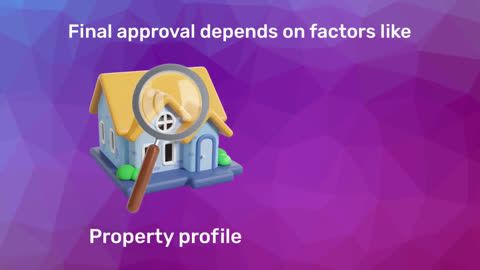What is a partition deed?
A partition deed is a legal document used to divide jointly-owned property among co-owners. It allows each owner to gain an individual and identifiable portion of the property. Partition deeds are commonly used when families or groups jointly own property and want to establish clear boundaries and ownership rights. With a partition deed, each co-owner has the legal right to their portion, and they can sell, lease, or mortgage it independently.A partition deed serves multiple purposes:
- Establishes clear ownership: Each co-owner gets a separate, distinct share.
- Avoids future disputes: By clearly defining who owns what, the deed prevents disputes.
- Allows financial independence: Each owner can use their share as they see fit, including taking out a mortgage loan.
Types of partition
There are two main types of partition:- Voluntary partition: All co-owners agree to divide the property.
- Partition by court: If co-owners cannot agree, the court can divide the property.
When is a partition deed needed?
A partition deed is usually required when:- A family property is passed down, and the heirs wish to divide it.
- Business partners own a property and wish to split their ownership.
- Joint property owners decide to end their partnership or co-ownership.
Format of a partition deed
Creating a partition deed involves following a certain format. While the format can vary depending on legal requirements, here is a basic template:1. Title and date of the deed: The deed should have a clear title, such as “Partition Deed,” along with the date of execution.
2. Details of parties involved: Include the names, addresses, and relationships of all co-owners (called "parties").
3. Recitals (background information): This section explains the history of ownership and the reason for partition. It may include how the property was acquired and the need for division.
4. Description of the property: A clear description of the property, including its location, size, and any boundaries. This helps avoid future confusion and establishes the scope of what is being divided.
5. Terms of partition: This is the most important section. It defines who gets which part of the property. Each portion should be clearly identified and assigned to a specific party. It may also mention any existing agreements, such as whether some parts are shared or held in trust.
6. Mutual consent and agreement: This section confirms that all parties agree to the partition terms willingly. It should clearly state that no party has been forced into signing the deed.
7. Indemnity clause: The indemnity clause protects each party from any claims or disputes that may arise regarding the other parties' portions. This ensures that each party is responsible for their own share alone.
8. Signatures of all parties: All co-owners must sign the deed in the presence of witnesses. The witnesses should also sign and provide their details.
9. Witness section: Each signature should be verified by two witnesses, who also sign the deed to validate it.
10. Notary and stamp duty: Depending on local laws, the deed may need to be notarized and stamped to be valid.
Steps to register a partition deed
Registering a partition deed is essential to make it legally binding. Here’s a simple guide to the registration process:1. Prepare the partition deed: Work with a lawyer to draft the deed in line with local property laws. The deed must be accurate and clear to avoid future disputes.
2. Calculate stamp duty: Every partition deed requires stamp duty, a government tax that varies depending on property value and state. Consult your local sub-registrar office or a legal expert to calculate this correctly.
3. Pay stamp duty and registration fees: After calculating, pay the stamp duty and registration fees. You may need to purchase stamp paper to officially document the deed.
4. Visit the sub-registrar’s office: All parties involved in the partition must be physically present with their ID proof. Submit the partition deed at the sub-registrar’s office to initiate the registration process.
5. Verification and signatures: The sub-registrar will verify the identities of all parties, along with the details in the deed. After verification, the deed must be signed by all parties and witnesses in the registrar’s presence.
6. Get the registered deed: After submission, you’ll receive a registered copy of the deed. Keep this document safe, as it serves as proof of the partition and legal ownership.
Benefits of registering a partition deed
Registering a partition deed comes with several advantages:- Legal recognition: Registration gives the deed legal validity, making it enforceable in court.
- Protects rights: Registration officially establishes each party's ownership rights.
- Simplifies future transactions: Registered deeds make it easier to sell, lease, or mortgage each party’s share.
Important points to keep in mind
- Seek legal help: Drafting and registering a partition deed requires accuracy and compliance with local laws. It’s best to consult a lawyer to ensure your deed is error-free.
- Check for existing loans or liens: Before partitioning property, ensure it’s free of any debts or legal claims. If you plan to use your share of the property to apply for a loan against property, an unencumbered title is essential.
- Keep the deed updated: If there are changes to ownership or the property itself, ensure your partition deed reflects this. Regular updates help prevent misunderstandings or disputes.
Difference between partition deed and partition agreement
While similar, a partition deed and a partition agreement have subtle differences:- Partition agreement: This is usually a preliminary agreement between the parties, laying out the intent to partition the property but without legal force. It’s often the first step and may serve as a draft before creating the official deed.
- Partition deed: A partition deed is the legally binding document that divides the property. It is recognized by law once registered and gives each party ownership over a specific part.




